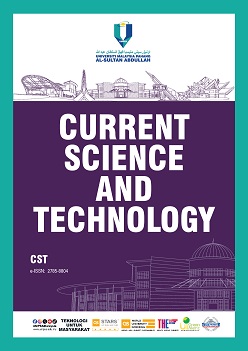Prediction of Smoke Temperature in a Warehouse Using Fire Dynamic Simulator
DOI:
https://doi.org/10.15282/cst.v4i2.11101Keywords:
Fire dynamic simulator, Smoke, Fire risk assessment, Warehouse FDSAbstract
The purpose of this study is to use computational fluid dynamics software, specifically the Fire Dynamics Simulator, to analyze the spread of smoke in high-rack warehouses. The significance of this research is risk that posed to human lives by smoke during fire incidents. High-rack warehouses were chosen as the focus due to their widespread construction globally, particularly in Malaysia where over 200 such warehouses exist. The developed model was modified multiple times to account for different parameter combinations, allowing for the simulation of numerous scenarios. The aim is to propose improvement that can assist designers and engineers in creating safer designs. The research objectives are to examine the relationship between smoke temperature and type of fire source in warehouse fires where the developed model was undergoing a few modifications on parameters and fire scenarios. The findings demonstrate that smoke temperature decreases with increasing building height and the presence of natural ventilation. Type of fire source also influence the smoke temperature. As a result, three recommendations have been derived from the results, intended for utilization by engineers and architects in the design of safer atriums in the future.
References
[1] K. Pooley, “The effect of firefighter-delivered fire safety education on young people who misuse fire,” Fire Safety Journal, vol. 115, p. 103156, 2020.
[2] T. Yamamura, “Study on fire risk analysis and fire prevention in residential nursing care homes for the elderly,” p. 110617.
[3] T. Gernay, “Performance-based design for structures in fire: Advances, challenges, and perspectives,” Fire Safety Journal, vol. 142, p. 104036, 2024.
[4] S. S. Nurud, I. Abdullah, M. Saari, A. Normariah, and B. Rafee, “Fire load survey in multi-storey wholesale premise-a case study,” International Journal of Engineering Technology and Sciences, vol. 5, no. 1, pp. 2462–1269, 2018.
[5] G. Guigay, “A CFD and experimental investigation of under-ventilated compartment fires,” Ph.D. dissertation, Department of Civil and Environmental Engineering, University of Iceland, 2008.
[6] B. Truchot, F. Fouillen, and S. Collet, “An experimental evaluation of toxic gas emissions from vehicle fires,” Fire Safety Journal, vol. 97, pp. 111–118, 2018.
[7] N. Arunraj, C. S. Kumar, and K. V. Maruthi, “Estimation of fire load and its risk assessment in warehouse,” vol. 2, no. 2, pp. 5–8, 2015.
[8] N. Jahan, S. Islam, and Md. I. Hossain, “Fire hazard risk assessment of mixed-use chemical storage facilities: A Case study of chemical warehouses in Old Dhaka,” Journal of Bangladesh Institute of Planners, vol. 9, pp. 113–124, 2016.
[9] N. S. Suhaimi, A. Ibrahim, N. A. Sa’ari Mustapha, N. M. Adam, and M. R. Baharuddin, “Development of a smoke prediction model using numerical simulations,” International Journal of Computer Aided Engineering and Technology, vol. 14, no. 4, p. 477, 2021.
[10] N. Johansson, “Numerical experiments-a research method in fire science,” Licentiate, Lund University, 2013.
[11] Department of Occupational Safety and Health (DOSH), Guidelines for Hazard Identification, Risk Assessment and Risk Control. Malaysia: Ministry of Human Resources, 2014.
[12] S. Nurud Suria and M. Sa’ari, “A review of fire risk assessment tools in compartment,” ARPN Journal of Engineering and Applied Sciences, vol. 11, no. 11, pp. 7284–7287, 2016.
[13] D. Il Kang, K. Kim, S. Jang, and P. O. B. Yusong, “Risk assessment of the main control room fire using fire simulations,” Transactions of the Korean Nuclear Society Autumn Meeting, Gyeongju, Korea, 24-25 October 2013.
Downloads
Published
Issue
Section
License
Copyright (c) 2024 The Author(s)

This work is licensed under a Creative Commons Attribution-NonCommercial 4.0 International License.



